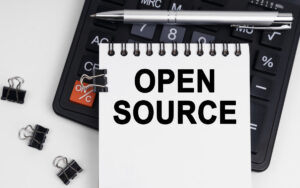Effective resource management is essential for project success, but it can be challenging without the right tools. Resource management tools are instrumental in project management, helping track materials, tools, equipment, and personnel. These tools ensure that projects are delivered on time and within budget, making them indispensable for project managers striving for success.
In a market flooded with resource management tools promising efficiency and optimization, selecting the best one for your organization can be overwhelming. To simplify this process, we’ve curated a list of the top resource management tools for aspiring and current project managers. This article will delve into each tool’s key features, advantages, disadvantages, and pricing, helping you make an informed decision based on your specific needs.
We’ll also recommend a project management course for project managers to gain an in-depth understanding of project requirements, budget constraints, team dynamics, and the workings and selection of relevant tools.
What is Resource Planning?
Resource planning involves strategically allocating personnel, equipment, and materials to ensure optimal project execution. It begins with identifying project-specific resource needs, forecasting future requirements, and allocating resources based on priority and availability.
In other words, resource planning ensures that the right people, tools, and materials are available when needed for project execution. Its goal is efficiency and timely delivery. Balancing resource demand and capacity is crucial. Transparent processes and tools for scheduling, budgeting, and alignment with corporate strategy support this.
Resource planning aims to minimize waste, streamline processes, and enhance responsiveness to customer demands, maximizing overall efficiency and effectiveness.
Also Read: What is Project Resource Management? Everything You Need to Know
What are Resource Management Tools?
Resource management tools are software solutions that help businesses manage and optimize resources like personnel, equipment, and materials across projects and tasks. These tools track resource availability, allocate resources effectively, and monitor utilization to ensure projects meet requirements and deadlines.
Resource management tools improve productivity, streamline workflows, and enhance project outcomes by providing visibility into resource allocation and utilization. They enable businesses to make informed decisions, allocate resources efficiently, and adapt to changing project needs. They help organizations minimize waste, avoid resource shortages, and maximize resource utilization, ultimately leading to more successful projects and improved overall efficiency.
Why Resource Management Tools Matter?
Companies often overlook the importance of balancing resources, leading to a lack of clarity regarding available assets and perpetuating a cycle of resource rigidity. This oversight can result in understaffed or overstaffed projects, negatively impacting the bottom line and jeopardizing deals. That’s where resource management tools come into the picture. Here’s how they are useful.
- Optimizing resource utilization: Resource management tools help businesses maximize the efficiency of their resources, ensuring that personnel, equipment, and other assets are utilized to their fullest potential, thereby improving overall operational efficiency and cost-effectiveness.
- Avoiding idle resources: By accurately tracking resource availability and demand, these tools prevent instances of underutilization, ensuring that no resources remain idle and minimizing the wastage of valuable assets, which can ultimately lead to cost savings for the company.
- Ensuring sustainable company growth: Effective resource management fosters sustainable growth by aligning resource allocation with business objectives. It enables organizations to scale operations efficiently without overstretching resources or compromising quality.
- Distributing workloads evenly: Resource management tools facilitate equitable distribution of tasks and responsibilities among team members, preventing overload on individuals and promoting a balanced workload distribution for improved productivity and employee satisfaction.
- Creating realistic schedules: These tools enable the creation of realistic project schedules by accurately assessing resource availability and capacity. They help businesses set achievable timelines and avoid over-commitment, improving project outcomes and client satisfaction.
- Forecasting capacity: Resource management tools allow businesses to forecast future capacity requirements by analyzing historical data and current resource usage trends. This enables proactive planning and resource allocation to effectively meet anticipated demand.
- Resolving conflicts: With real-time visibility into resource allocation and availability, these tools help identify and resolve disputes such as overbooking or resource shortages, minimizing disruptions and ensuring smooth project execution.
- Enhancing productivity: Resource management tools empower teams to work more efficiently, meet project deadlines, and achieve organizational goals with greater productivity and effectiveness by streamlining resource allocation, optimizing workflows, and promoting collaboration.
Also Read: Best Apps for Project Management You Should Know in 2024
The Best Resource Management Tools in 2024
Hive
Features: Hive offers comprehensive project resourcing functionality with time-tracking, resourcing planning, and customizable workflows. It includes multiple views such as Gantt, Calendar, Kanban, etc. The platform also integrates a native chat and email function for seamless team communication.
Pros: Built by users for users, it has an intuitive interface and robust project management features. It offers a 14-day free trial and starts at $12/user per month.
Cons: Advanced features may require higher-tier plans, and the initial setup might have a learning curve.
Pricing: Starts at $12/user per month.
Float
Features: Float focuses on team time management, allowing users to set individual work hours, track time for tasks, and schedule personal time off. It enables project planning with budget and custom time constraints, providing granular insights into project phases and resource allocation.
Pros: It offers easy resource assignment, customized time tracking, and various project management systems integrations. Pricing starts at $6/month, and there is a 14-day free trial.
Cons: Higher-tier plans may be required for advanced features, and some users may find the interface less customizable.
Pricing: Starts at $6/month.
Saviom
Features: Saviom offers real-time insights with data analytics tools and dashboards, aiding resource management for enterprise businesses. It provides various views, including Gantt charts and schedulers, for better resource utilization and forecasting.
Pros: Graphic reports for visual comparisons, integration with project management systems, and flexible pricing based on business size and licensing requirements.
Cons: Limited customization options for reports, and pricing varies depending on business size.
Pricing: Available as a free trial for 4-6 weeks, with pricing dependent on business size and licensing.
Resource Guru
Features: Resource Guru simplifies resource scheduling with drag-and-drop functionality and a clash management system to prevent over-bookings. It offers reporting tools for resource utilization rates and integrates with project management systems.
Pros: Unique meeting room assistant, customizable dashboards, and integration with project management systems. Pricing starts at $2.50 per person/month with a 30-day free trial.
Cons: Higher-tier plans may require advanced features, and some users may find the interface less intuitive.
Pricing: Starts at $2.50 per person/month.
Mosaic
Features: Mosaic is an AI-powered workforce management software integrating project and financial management systems. It offers AI-powered reporting for resource optimization and project suggestions based on available skills.
Pros: Visual resource planning dashboard, AI-powered reporting, and integration with project management systems. Pricing starts at $9.99 per person/month with a 30-day free trial.
Cons: Some businesses may have a higher learning curve for AI-powered features and pricing.
Pricing: Starts at $9.99 per person/month.
Teamdeck
Features: Teamdeck is a team and project resource management tool with scheduling, time tracking, and leave management capabilities. It provides visibility into the team workload and integrates with common work tools.
Pros: Team scheduling, workload management, and integration with work tools like Google Calendar and Slack. Pricing starts at $3.60 per user per month.
Cons: Lower-tier plans may limit advanced features, and businesses with complex resource needs may require additional customization.
Pricing: Starts at $3.60 per user per month.
Forecast
Features: Forecast offers long-term and short-term resource planning, with zoom-in and zoom-out features for project overviews. It also provides a heatmap view for resource allocation and integrates with project management systems.
Pros: Zoom in and out for resource overviews, financial reporting, and auto-scheduling capabilities. Pricing starts at $29 per seat/month with a 14-day free trial.
Cons: Some users may find the interface less intuitive, and custom reports may require training.
Pricing: Starts at $29 per seat/month.
Mavenlink by Kantata
Features: Mavenlink by Kantata offers resource forecasting, capacity management, and skills management features. It provides real-time utilization and margin insights at project and task levels.
Pros: Resource forecasting, capacity management, and integration with project management systems. Customizable dashboards for reporting.
Cons: Custom reports may require training, and additional features like Proofing may be available only as add-ons.
Pricing: Customized pricing based on business requirements.
nTask
Features: nTask combines task, team, and resource management functionalities with time tracking and timesheet management. It provides Kanban boarding and Gantt charting for project planning.
Pros: In one platform, task management, team management, and resource management features. Affordable pricing starts at $4/month/user.
Cons: Some advanced features may be limited, and businesses with complex resource needs may require additional customization.
Pricing: Starts at $4/month/user.
Smartsheet
Features: Smartsheet’s resource management helps schedule the right candidate for projects, track progress, and predict hiring needs in real time. It offers simple resource allocation and project planning features.
Pros: Simple resource allocation, project planning, and time-tracking features. Affordable pricing starts at $7/user/month with a 30-day free trial.
Cons: Advanced features may be limited, and some users may find the interface less customizable.
Pricing: Starts at $7/user/month.
Runn
Features: Runn allows real-time resource planning with drag-and-drop editing and performance metrics. It offers scheduling, time tracking, and project forecasting features for efficient resource allocation.
Pros: Resource scheduling, project planning, and reporting features. Affordable pricing starts at $8/user/month with a free plan available.
Cons: The interface may be less customizable, and some advanced features may be limited.
Pricing: Starts at $8/user/month.
ControlHippo
Features: ControlHippo specializes in SaaS management, helping track licenses, streamline renewals, and optimize costs. It offers comprehensive SaaS portfolio management tools for efficient resource allocation.
Pros: SaaS management capabilities, cost optimization features, and integrations with other software tools.
Cons: It may be less suitable for businesses with diverse resource management needs beyond SaaS.
Pricing: Customized pricing based on business size and requirements.
Paymo
Features: Paymo offers task management, time tracking, and invoicing features for resource allocation and billing. It includes a free plan for personal use and affordable pricing starting at $4.95/user/month.
Pros: Focus on time management and invoicing, accessible from various platforms, and a free plan available. Affordable pricing with essential features.
Cons: Some advanced features may be limited,
eResource Scheduler
Features: eResource Scheduler provides enterprise-wide resource visibility, utilization tracking, and reporting. It includes time-tracking and timesheet management capabilities for accurate work-hour tracking.
Pros: Comprehensive resource management features, integration with project management systems, and customizable reports. A 14-day free trial allows users to test the platform.
Cons: Some advanced features may be limited in lower-tier plans.
Pricing: Customized pricing based on business needs and requirements.
Monday.com
Features: Monday.com offers robust resource management features, including an intuitive drag-and-drop interface for task assignment and progress tracking, customizable time tracking, and reporting features.
Pros: Intuitive interface, customizable time tracking, and integration with a wide range of project management systems. Starts at $8/user/month with a 14-day free trial.
Cons: Some users may find the interface less customizable for their specific needs.
Pricing: Starts at $8/user/month.
Also Read: 20 Best Practices in Project Management [2024 Guide]
How to Choose the Right Resource Management Tool?
Choosing the right resource management tool is crucial for optimizing your business operations and achieving your goals effectively. Here’s a guide on how to select the most suitable tool for your organization:
Identify Your Needs
Assess your organization’s specific requirements and challenges regarding resource management. Determine the key features and functionalities you need in a tool to address these needs effectively.
Define Your Goals
Clearly outline your objectives for implementing a resource management tool. Whether it’s optimizing resource utilization, improving project scheduling, or enhancing team collaboration, having well-defined goals will guide your decision-making process.
Consider Scalability
Choose a tool that can scale with your business as it grows. Ensure the tool can accommodate increasing resource demands and evolving project complexities without compromising performance or functionality.
Evaluate Ease of Use
Opt for an intuitive and user-friendly tool. This will make it easier for your team to adopt and utilize effectively. To enhance usability, look for features such as customizable interfaces, drag-and-drop functionality, and clear navigation.
Assess Integration Capabilities
Determine whether the tool integrates seamlessly with your existing systems and workflows, such as project management software, CRM platforms, or collaboration tools. Integration capabilities ensure smooth data exchange and streamline processes across different tools.
Review Reporting and Analytics
Look for a tool with robust reporting and analytics capabilities to gain insights into resource utilization, project performance, and team productivity. Advanced reporting features enable informed decision-making and strategic resource planning.
Consider Customization Options
Choose a tool that allows for customization to tailor it to your organization’s unique requirements and workflows. Customizable features and settings ensure the tool aligns closely with your business processes and preferences.
Evaluate Support and Training
Assess the level of support and training offered by the tool provider. Look for resources such as user guides, tutorials, and customer support channels to assist with onboarding and troubleshooting issues as they arise.
Review Security Measures
Prioritize security features to protect sensitive data and ensure compliance with industry regulations. Verify that the tool implements robust security measures such as encryption, access controls, and regular security updates to safeguard your information.
Trial and Feedback
Take advantage of free trials or demos offered by tool providers to evaluate their suitability for your organization. Gather feedback from key stakeholders and end-users to assess user satisfaction and identify potential limitations or improvement areas.
Looking to Upskill or Upgrade Your Project Management Knowledge? Get Started Now!
Picking the ideal resource management software for a single project or a portfolio can make a big difference in the project delivery and outcomes. Therefore, it’s essential to thoroughly review specifications, read reviews, and compare them with your needs before choosing.
If you’re new to project management or want to level up your career in this field, enrolling in a project management program can help. This top-rated course will help you master the best practices and highly sought-after skills in project management.
Aligned with PMI-PMP® and IASSC-Lean Six Sigma, this course teaches you how to manage and execute complex projects using the right techniques, methodologies, and tools. In addition to live interactive lessons and masterclasses by industry experts, you’ll also get to practice what you’ve learned and build hands-on experience through real-world projects and case studies.
You might also like to read:
How to Measure Project Success? A 2024 Guide
Remote Project Management: How to Manage Remote Teams Effectively
What are Project Management Skills? Here are Top Skills You should Know in 2024







